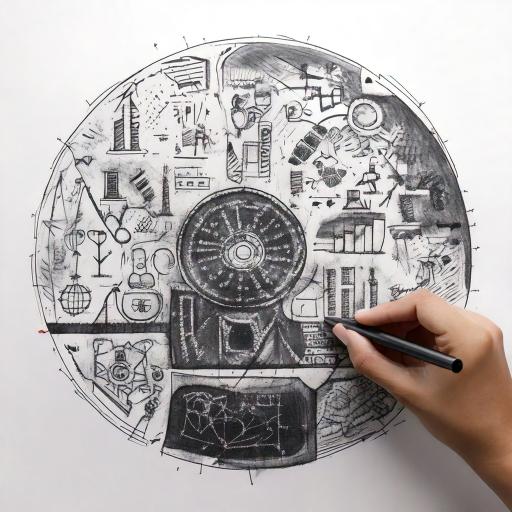From Blaming Employees to Analysing the System.
The Problem with Blaming Employees:
Leaders commonly fall into the trap of assuming that underperformance stems from a lack of effort or engagement. This reactive response places the burden of failure solely on the individual, ignoring potential structural or environmental factors that may be contributing. However, this mindset is both ineffective and counterproductive.
Blaming employees creates a culture of fear and defensiveness, where people are less likely to take risks or voice their challenges. It also prevents leaders from addressing the root cause of the performance gaps, perpetuating the very problems they are trying to solve. Worse, it can result in high turnover as employees feel unsupported and frustrated.
Why This Happens:
- Effort vs. Environment: Leaders may assume that success is simply a matter of trying harder, but in reality, success depends on factors like resources, training, leadership, and feedback.
- Limited View: When leaders don’t look beyond the employee to the broader system, they miss opportunities to improve operational processes that impact performance across the board.
Why Analysing the System Matters:
Operational excellence isn’t just about the individual—it’s about how all parts of the organisation work together. Poor performance often indicates a deeper issue within the training process, resource allocation, communication, or leadership support. Instead of viewing failures as isolated, leaders should ask: What isn’t working in the system?
Shifting the focus from blame to systemic analysis allows leaders to:
- Improve Efficiency: By examining the processes and tools employees use, leaders can identify inefficiencies and remove obstacles.
- Foster a Culture of Learning: When employees see that leaders are willing to adjust the system rather than scapegoat individuals, they feel safer discussing challenges and more open to feedback.
- Boost Retention and Engagement: Employees who feel supported are more likely to stay and thrive within the organisation. When systemic issues are addressed, engagement and performance naturally improve.
The Mindset Shift: Analyse the System, Not Just the Person
Instead of asking, “Why isn’t this employee performing?” leaders should start by asking, “What in our system might be contributing to this performance gap?” Here’s how to shift to a systems-thinking approach:
- Assess Training and Resources: Is the employee adequately trained? Do they have the resources they need to succeed? Often, poor performance is the result of gaps in onboarding or ongoing development, not lack of effort.
- Evaluate Leadership Support: Are leaders offering the necessary feedback and guidance? A lack of consistent feedback or unclear communication can leave employees uncertain about expectations, leading to underperformance.
- Examine Process Barriers: Are there inefficiencies or obstacles in the workflow that prevent success? Employees may be bogged down by outdated tools, confusing processes, or unrealistic workloads that make success impossible.
- Create a Feedback Loop: Establish regular opportunities for employees to share what is and isn’t working for them. This helps to uncover systemic issues and ensures that employees feel heard and supported.
Practical Example:
Consider an employee who is struggling to meet deadlines. The immediate reaction might be to assume they’re not working hard enough. However, a systems approach would involve looking at the tools they’re using. Perhaps their software is outdated, or their workload is poorly managed, or maybe they haven’t received clear enough instructions.
In this case, blaming the employee doesn’t solve the underlying problem. By fixing the workflow or improving the support structure, not only will that employee’s performance improve, but the overall operational efficiency of the team will benefit as well.
The best leaders don’t just hold employees accountable—they hold the entire system accountable. When employees fail, it’s often a symptom of broader organizational issues. By analysing and fixing those underlying causes, leaders can create a system where employees are set up to succeed, and operational excellence becomes a natural outcome.
Why This Shift Is Critical:
Operational excellence depends on leaders who can take a holistic view of performance and development. Leaders must be willing to look beyond individual effort and ask how they can improve the processes, resources, and feedback loops that drive employee success. This approach not only fosters a culture of accountability but also leads to more sustainable improvements and a more engaged workforce.
Take a moment to reflect on your team’s recent performance challenges. Are there recurring issues that might stem from systemic problems rather than individual shortcomings? Start by analysing the tools, training, and support systems in place, and explore how you can adjust them to empower your team to succeed.
This article is part of our series on Operational Excellence through People Development. In the next article, we’ll discuss the mindset shift from solving problems reactively to proactively improving systems and processes before they become obstacles.
Read the Full Operational Excellence Series
Mindset shift #1: From Training as a Perk to Training as a Core Business Practice. Read the article here: Rethinking underperformance
Mindset shift #2: From Someone Else’s Responsibility to Manager-Led Development. Read the article here: Leader-Ownership
Mindset shift #3: From Inconsistent Standards to Clear Expectations. Read the article here: Setting Clear Standards
Mindset shift #4: From One-Time Training to Continuous Development. Read the article here: Continuous Learning
Mindset shift #6: From Transactional Training to Building Relationships. Read the article here: Building relationships

